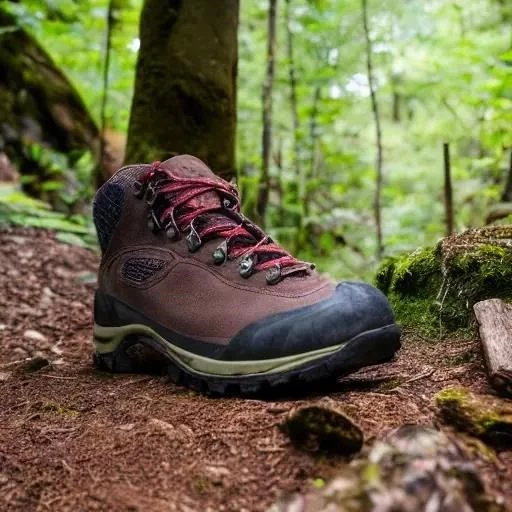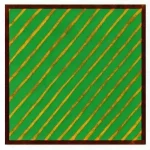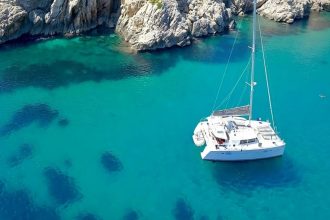For decades‚ the iconic yellow triangle logo of Caterpillar has been synonymous with rugged construction sites‚ unyielding durability‚ and the relentless grind of heavy industry. Workers worldwide have trusted these formidable boots‚ known for their steel toes and robust leather‚ to shield their feet from the harshest environments. But what if the very attributes that make them titans of the factory floor — their legendary toughness‚ their formidable grip‚ their sheer resilience, could also equip you for an entirely different kind of challenge? The whispers have begun‚ circulating among intrepid adventurers and budget-conscious outdoor enthusiasts: could Caterpillar boots be a surprisingly effective choice for conquering the untamed wilderness?
The notion might initially seem counterintuitive. Dedicated hiking boots‚ engineered with lightweight materials‚ specialized waterproofing membranes‚ and advanced sole technologies‚ dominate the outdoor gear market‚ promising unparalleled comfort and performance on varied terrains. Yet‚ a growing number of individuals are turning their gaze towards the familiar‚ robust profiles of Caterpillar boots‚ pondering their potential on the winding trails and rocky ascents. Is this a clever hack for resourceful trekkers‚ or a misguided compromise that could lead to discomfort and even danger? The answer‚ as with many things in the complex world of outdoor gear‚ is far more intricate than a simple yes or no‚ demanding a careful examination of their inherent strengths and critical limitations‚ ultimately guiding aspiring hikers toward an informed decision.
Caterpillar Boots for Hiking: A Quick Assessment
| Feature | Assessment for Hiking | Notes & Considerations |
|---|---|---|
| Durability | Excellent | Built for demanding work environments‚ incredibly resilient against abrasions and punctures‚ promising exceptional longevity. |
| Protection | Very Good (especially toe/ankle) | Often features steel toes and robust ankle support‚ which are absolutely crucial for navigating rocky trails and preventing impact injuries. |
| Traction | Good (on varied terrain) | Deep lug patterns provide solid grip on dirt‚ mud‚ and loose gravel‚ but may struggle on wet‚ smooth surfaces like slick rocks. |
| Weight | High | Significantly heavier than most dedicated hiking boots‚ potentially leading to increased fatigue and reduced agility on longer‚ challenging treks. |
| Breathability | Moderate to Limited | Often less breathable than hiking-specific footwear‚ leading to warmer‚ potentially sweatier feet‚ particularly in hot climates. |
| Flexibility | Limited | Stiffer soles and uppers reduce natural foot movement‚ which can be taxing on long‚ varied trails requiring dynamic foot placement. |
| Waterproofing | Varies (check model) | Some models offer water resistance or waterproofing‚ but not all. Dedicated hiking boots often incorporate superior‚ integrated membrane technologies. |
| Cost | Often more affordable | Can be a remarkably budget-friendly alternative to high-end hiking boots‚ especially for casual use or those just starting out. |
For more information on Caterpillar footwear‚ visit: catfootwear.com
The Unquestionable Strengths: A Shield Against the Elements
When considering Caterpillar boots for hiking‚ their most glaring advantage lies in their unparalleled durability and protective capabilities. Imagine traversing a trail littered with sharp rocks‚ fallen branches‚ and unseen obstacles; a sturdy pair of work boots‚ built to withstand industrial hazards‚ acts as a formidable armor for your feet. The reinforced toe caps‚ often steel or composite‚ offer exceptional protection against impacts‚ a feature frequently absent in lighter hiking footwear. Moreover‚ the thick‚ full-grain leather uppers resist abrasions with remarkable efficacy‚ promising a lifespan that can often outlast several pairs of more delicately constructed hiking boots. This inherent toughness‚ forged in the crucible of construction sites‚ translates directly into a sense of security on rugged‚ unforgiving paths. They are‚ in essence‚ like strapping a mini-Sherman tank onto each foot‚ offering robust defense against the unpredictable wilderness.
The Weighty Reality: A Trade-off in Agility and Endurance
However‚ this very robustness comes with a significant trade-off: weight. Dedicated hiking boots are meticulously engineered to minimize mass‚ reducing the energy expenditure with each step. Caterpillar boots‚ by contrast‚ are typically substantially heavier‚ a characteristic that can quickly lead to fatigue on longer treks. Picture yourself ascending a steep incline‚ each foot feeling like a lead weight; the cumulative effect over miles can be profoundly draining. Beyond mere weight‚ their inherent stiffness‚ designed for flat‚ stable surfaces‚ limits the natural flexion of the foot‚ impacting agility on uneven terrain. This reduced flexibility can make navigating roots‚ rocks‚ and switchbacks more challenging‚ potentially increasing the risk of stumbles or minor injuries‚ especially when descending.
Beyond the Grip: Traction and Terrain Specificity
The deep lug patterns characteristic of Caterpillar boots certainly provide excellent traction on soft ground‚ mud‚ and loose gravel—terrains commonly encountered on trails. These aggressive outsoles‚ engineered for stability on diverse work surfaces‚ can grip surprisingly well. However‚ they are not universally optimized for all hiking conditions. When faced with wet‚ smooth rock or slippery roots‚ the rubber compounds and tread designs of specialized hiking boots‚ often incorporating multi-directional patterns and softer‚ stickier compounds‚ frequently outperform their workwear counterparts. “The geometry of a sole is paramount‚” explains Dr. Kenji Tanaka‚ a materials scientist specializing in footwear. “While work boots prioritize deep‚ large lugs for penetration and stability‚ hiking boots often feature more complex‚ varied patterns designed to maximize surface contact and grip across a wider array of unpredictable natural textures.”
Comfort and Climate: The Breathability Dilemma
Another crucial consideration for any serious hiker is breathability. Prolonged activity inevitably leads to sweating‚ and without adequate ventilation‚ feet can become uncomfortably damp‚ prone to blisters‚ and susceptible to fungal infections. Traditional Caterpillar boots‚ with their thick leather and often minimal ventilation‚ tend to retain heat and moisture far more than most modern hiking boots‚ which frequently incorporate breathable mesh panels and advanced moisture-wicking linings. While some newer Cat models are integrating improved ventilation and waterproof membranes‚ a significant portion still leans towards pure ruggedness over climate-controlled comfort. This aspect becomes particularly critical in warmer climates or during extended‚ multi-day expeditions where drying out footwear is essential.
The Verdict: A Pragmatic Choice for Specific Adventures
So‚ are Caterpillar boots good for hiking? The nuanced answer is: they can be‚ for certain types of hiking. For casual day hikes on well-maintained trails‚ or for rugged‚ short excursions where protection and durability are paramount and speed is not a primary concern‚ they absolutely offer a viable‚ often more affordable‚ alternative. They excel in environments where you might encounter sharp debris‚ need exceptional ankle support‚ or simply value robust construction above all else. However‚ for serious‚ long-distance backpacking‚ technical climbs‚ or hikes in varied‚ demanding conditions where lightweight design‚ superior flexibility‚ and advanced breathability are critical‚ dedicated hiking boots remain the undeniably superior choice. By carefully assessing your specific needs‚ the terrain you’ll traverse‚ and the duration of your adventure‚ you can make an incredibly informed decision. The future of outdoor footwear continues to evolve‚ with innovations blurring lines between work and leisure‚ but understanding the core design philosophies of each category remains the key to unlocking your best outdoor experience. Ultimately‚ the best boot is the one that fits your adventure perfectly‚ empowering you to explore with confidence and comfort.






